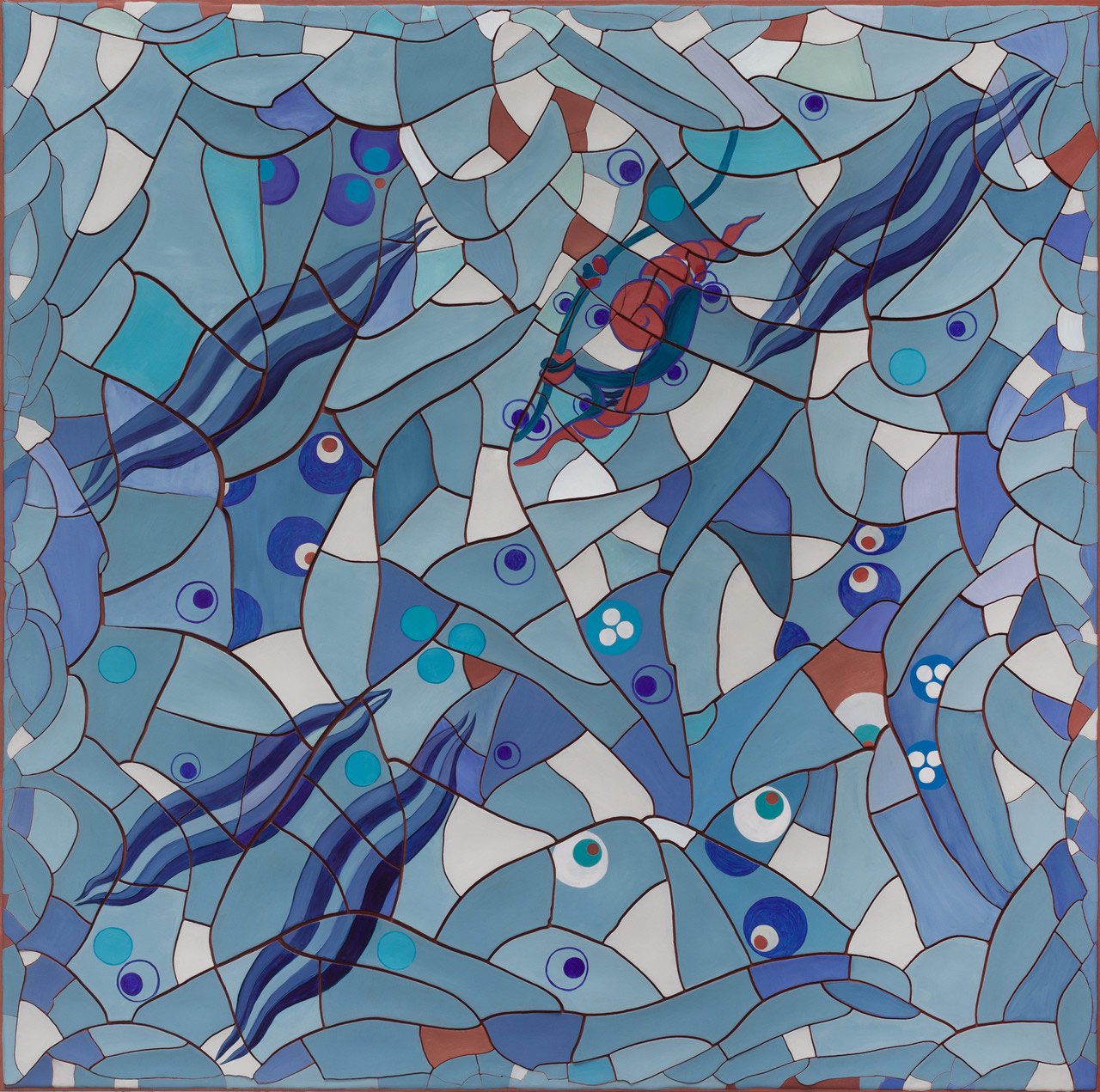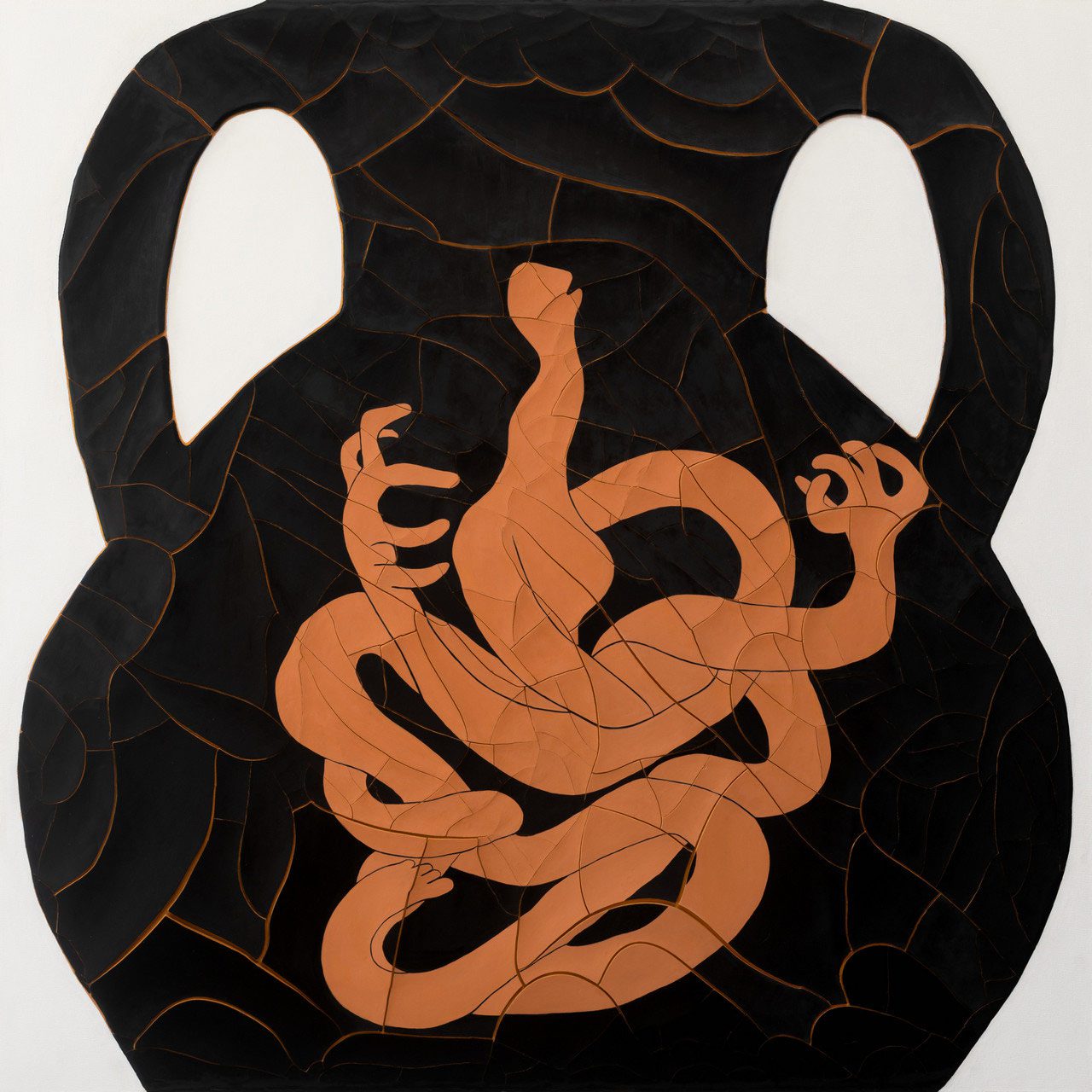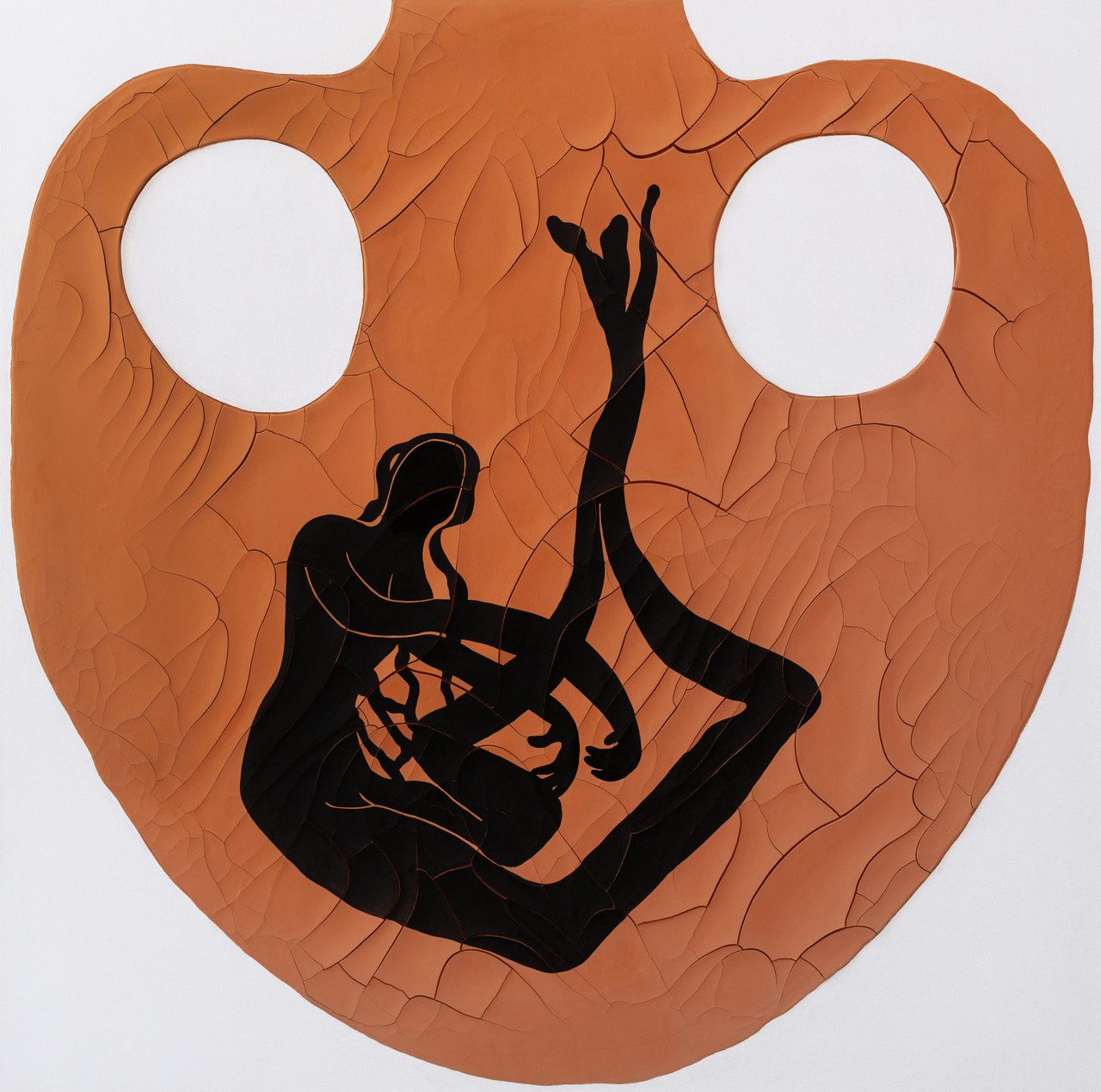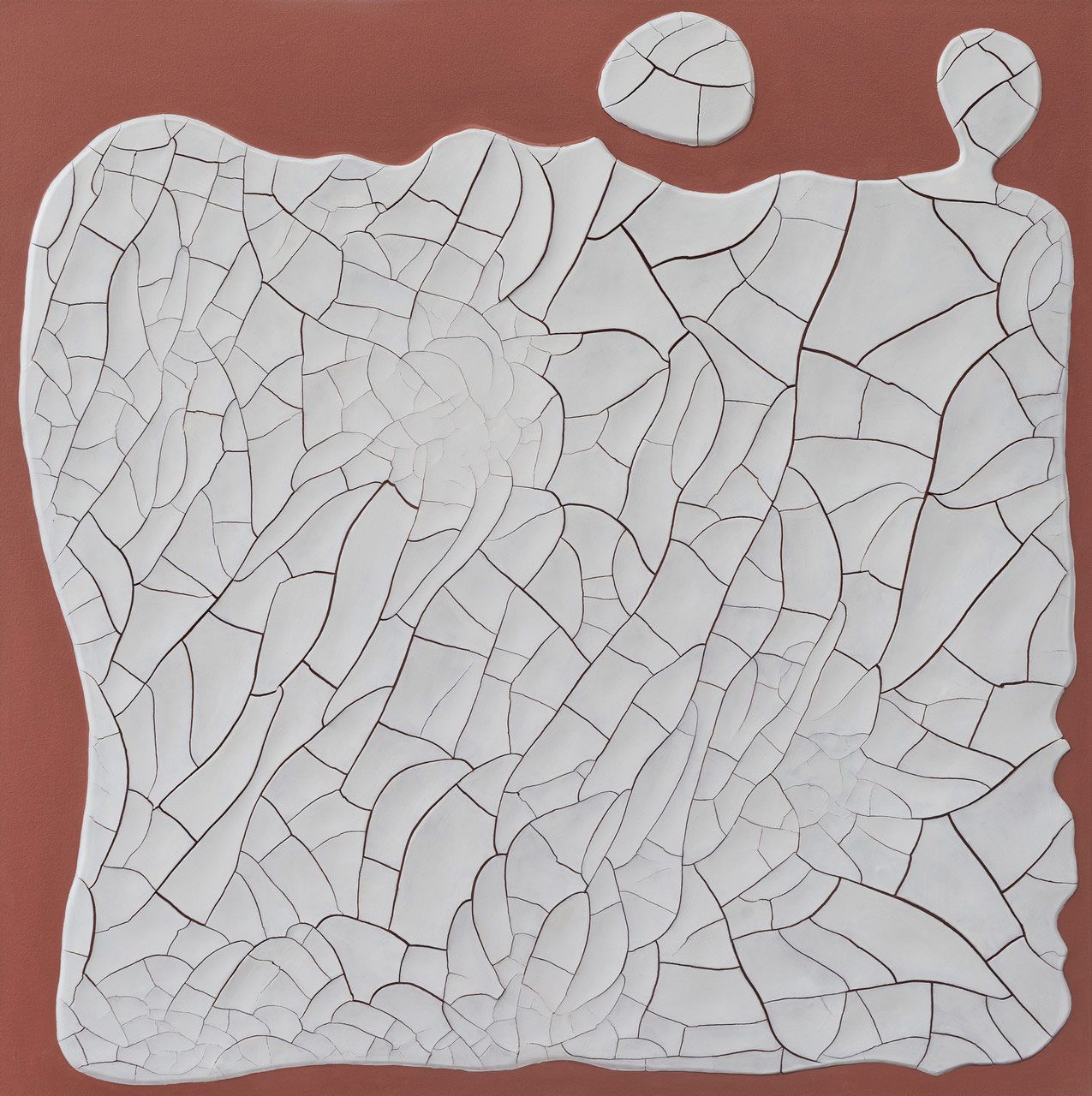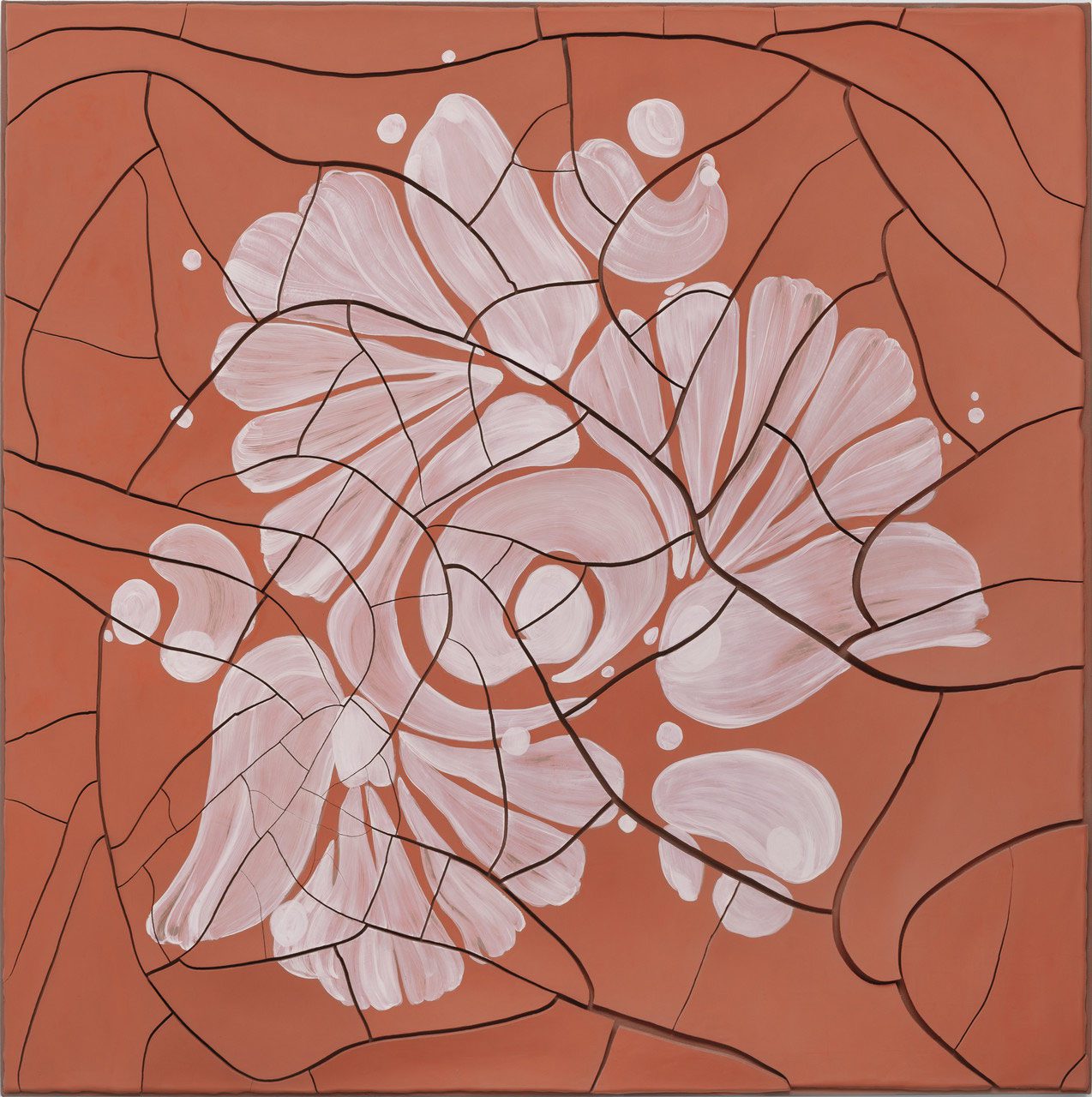ART CITIES: Athens-Adriana Varejão
Adriana Varejão has developed a rigorous practice that is informed by cultural and historical research. Each series is based on intense investigation into fields such as art history, anthropology, colonial trade, demography, and racial identity. Her early work resulted in graphic depictions highlighting historical inaccuracies and hierarchies of power during Brazil’s colonial period, often referencing the subjugation of the native peoples by Portuguese conquistadors and the evangelization by Catholic missionaries.
By Dimitris Lempesis
Photo: Gagosian Archive
Adriana Varejão’s “Histórias Moldadas”, her debut solo exhibition in Greece, unveils four new bodies of work from her iconic “Tile” series. Presented at Gagosian, the show weaves together a visual and conceptual dialogue among ceramic traditions from Brazil, Greece, Turkey, and China: cultures historically connected through trade, colonization, and artistic exchange. Fusing painting and sculpture, Varejão’s works are deeply Baroque in spirit—brimming with parody, paradox, sensuality, and dramatic tension. Her textured surfaces appear fractured and flesh-like, inviting viewers to question the boundaries between medium and message. With each piece, she challenges canonical art histories and reclaims overlooked narratives through the language of ornamentation and decay. At the heart of her process is her distinctive use of “craquelure”—a technique inspired by the crackled glazes of Chinese Song dynasty porcelain. Varejão hand-mixes plaster, applying it in thick layers to canvas. As it dries, it naturally splits into fissures, forming a poetic calligraphy of fragmentation. These cracks evoke eroded landscapes, ancient ruins, and the inexorable passage of time, turning surface into storytelling. Begun in 1988, the “Tile” series blurs the line between ceramic and canvas. Varejão reimagines the gleaming weight of porcelain and the luminous finish of azulejos—the decorative painted tiles that trace a transcontinental lineage from Islamic art and the Italian Renaissance to Dutch interiors and colonial Brazil. In her hands, these surfaces become sites of both beauty and rupture, embedding cultural hybridity into every layer. On the gallery’s ground floor, two adjoining rooms envelop visitors in warm, earthen hues. The first features terracotta-toned paintings adorned with milky white motifs, referencing traditional pottery from Maragogipinho, a historic ceramic center in Bahia. These works vibrate with life, where geometric and organic, human and animal forms coalesce—gesturing toward a deep-rooted relationship between body, craft, and soil. In the next room, this iconography takes a mythological turn. Cracked plaster panels suggest the tactile richness of both Brazilian folk art and ancient Mediterranean relics. One standout piece adopts the form of a bull-shaped vessel, over which sprawls a sinuous female figure—an homage to Brazilian modernist Maria Martins and an allusion to the myth of Europa and Zeus. Rendered in burnished amber and obsidian black, the work bridges cultures and epochs, folding eroticism into archetype. Ascending to the upper floor, the tone shifts to cool restraint. Here, a suite of monochromatic paintings evokes Chinese imperial porcelain, especially the ethereal celadon glazes known as Qing Ci. A poem from the Song dynasty lends resonance: “After the rain, the sky is blue and the clouds open. And this is the color of becoming. Celadon, Qing Ci.” The works shimmer with spiritual calm, their fractured surfaces suggesting both vulnerability and serenity. The exhibition culminates in a seaborne palette of blue and white, drawn from Turkish Iznik ceramics and the maritime heritage of the Ottoman Empire. Varejão channels oceanic rhythms into painted fragments, where evil eyes, marine creatures, and undulating waves drift across tiled plains. These compositions ripple with energy, conjuring a watery world both talismanic and timeless. With “Histórias Moldadas”, Adriana Varejão invites us to consider the tile not just as ornament, but as vessel—of memory, violence, diaspora, and desire. In the cracks and glazes of her painterly ceramics, entire histories are shattered and reshaped.
Photo: Adriana Varejão, Maragogipinho Flor, 2025, Oil and plaster on canvas, 64 5/8 x 64 5/8 inches (164 x 164 cm), © Adriana Varejão, Photo: Vicente de Mello, Courtesy the artist and Gagosian
Info: Gagosian, 22 Anapiron Polemou Street, Athens, Greece, Duration: 15/5-14/6/2025, Days & Hours: Tue-Wed & Fri-Sat 11:00-19:00, Thu 11:00-20:00, https://gagosian.com/


